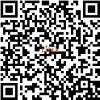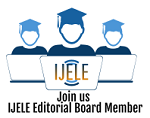(2) Punaji Setyosari
(3) Dedi Kuswandi
(4) Hendy Praherdhiono
(5) Aji Prasetya Wibawa
*corresponding author
AbstractReligious intolerance is rising globally, including in Indonesia, a pluralistic nation with over 600 ethnic groups and six official religions. Ironically, cases of intolerance have emerged even in Yogyakarta, an educational and cultural barometer renowned for its local wisdom of tepa selira (mutual respect). This study investigates how elementary school teachers in Yogyakarta, Indonesia understand and internalize religious tolerance in classroom practices. Employing a qualitative phenomenological approach, data were collected through interviews, observations, FGDs, and document analysis involving 20 teachers from 10 diverse elementary schools. Findings indicate that most teachers focus on cognitive outcomes and struggle to assess tolerance in the affective domain. However, one multicultural school Pelangi Elementary demonstrates an alternative approach by emphasizing shared human values such as kindness, gratitude, and togetherness, and by removing formal religious instruction to foster inclusivity. The school integrates dialogical pedagogy, parental involvement, and community engagement, making tolerance a lived experience rather than a theoretical concept. This study concludes that religious tolerance education in diverse societies must move beyond textbooks toward character-based, participatory learning rooted in local wisdom and inclusive practice. The Pelangi model offers a promising strategy adaptable to other pluralistic contexts.
Keywordsreligious tolerance; elementary education; lessons learned; pluralistic society
|
DOIhttps://doi.org/10.31763/ijele.v6i3.1903 |
Article metrics10.31763/ijele.v6i3.1903 Abstract views : 174 | PDF views : 6 |
Cite |
Full Text Download Download
|
References
[1] BBC News, “US election 2020: Why racism is still a problem for the world’s most powerful country,†bbc.com, Oct-2020.
[2] N. C. CNN, “2020: The year America confronted racism,†edition.cnn.com, 2020. .
[3] The Guardian, “There’s a social pandemic poisoning Europe: hatred of Muslims,†www.theguardian.com, 2020. .
[4] DetikNews, “Imparsial: Ada 31 Kasus Intoleransi di Indonesia, Mayoritas Pelarangan Ibadah,†news.detik.com, Jakarta, Nov-2020.
[5] Republika, “Ini Sosok Jozeph Paul Zhang, Penista Islam,†Repubika.co.id, Jakarta, Apr-2021.
[6] Katadata, “2020, Penduduk Indonesia Terbesar Keempat Dunia,†databoks.katadata.co.id, 2020. .
[7] BPS, “Mengulik data suku di Indonesia,†Badan Pusat Statistik, 2015. .
[8] CNN Indonesia, “Yogyakarta kota yang makin tak toleran.,†cnnindonesia.com, 2016. .
[9] The Jakarta Post, “‘This is community consensus’: Yogyakarta villagers destroy cross on public cemetery,†thejakartapost.com, Jakarta, Dec-2018.
[10] BBC News, “Diusir dari desa karena agama, bagaimana mencegah intoleransi di tingkat warga?,†bbc.com, Apr-2019.
[11] Suara Jogja, “Jogja sudah kosmopolit sejak berdiri, intoleransi tak seharusnya terjadi.,†suarajogja.id, Yogyakarta, Mar-2021.
[12] U. G. Sutikno, E. Irmawati, and F. Ahlania, “Pendidikan karakter tepa selira berbasis experiental learning dalam bimbingan,†in Prosiding Konferensi Pendidikan Nasional “Penguatan Karakter Bangsa melalui Inovasi Pendidikan di Era DIgital,†2018, pp. 229–235.
[13] Budiyono and Y. A. Feriandi, “Menggali nilai nilai kearifan lokal budaya jawa sebagai sumber pendidikan karakter,†in Prosiding Seminar Nasional Bimbingan dan Konseling, 2017, vol. 1, no. 1, pp. 92–103.
[14] E. Sugawara and H. Nikaido, “Properties of AdeABC and AdeIJK efflux systems of Acinetobacter baumannii compared with those of the AcrAB-TolC system of Escherichia coli.,†Antimicrob. Agents Chemother., vol. 58, no. 12, pp. 7250–7, Dec. 2014, doi: 10.1128/AAC.03728-14.
[15] J. Daryanto, “Tepa Selira Culture in the Art of Karawitan,†in Journal International Seminar on Languages, Literature, Arts, and Education (ISLLAE), 2019, vol. 1, no. 1, pp. 1–4.
[16] D. Santoso, “The reflection of tepa selira ‘considerate’ in the provincial parliament’s meeting of Yogyakarta special territory,†Int. J. Stud. English Lang. Lit., vol. 4, no. 8, 2016, doi: 10.20431/2347-3134.0408005.
[17] C. Hasanudin, A. Fitrianingsih, N. Fitriyana, and N. Ulfaida, “Design and Validity of Local-Wisdom-Based Reading Apps Using Adobe Animate CC 2022,†Int. J. Inf. Educ. Technol., vol. 14, no. 1, pp. 1–11, 2024, doi: 10.18178/ijiet.2024.14.1.2017.
[18] Zuhdiyah, N. Khodijah, and Z. Ramdani, “Religious Belief: An Interpretative Phenomenological Analysis on the Experience of Minority Students in Implementing Religious Education,†Qual. Res. Educ., vol. 13, no. 3, pp. 243–261, 2024, doi: 10.17583/qre.11651.
[19] U. Hadi, “Heboh Pembina Pramuka Ajarkan Tepuk ‘No Kafir’ di SD Yogya. (Splashy, Scout Instructor Teaches ‘No Kafir’ Clap at Yogya Elementary School),†Jan-2020.
[20] T. Wijaya Mulya and A. Aditomo, “Researching religious tolerance education using discourse analysis: a case study from Indonesia,†Br. J. Relig. Educ., vol. 41, no. 4, pp. 446–457, Oct. 2019, doi: 10.1080/01416200.2018.1556602.
[21] UU Sisdiknas, Undang Undang Republik Indonesia, tentang Sistem Pendidikan Nasional. Indonesia, 2003.
[22] E. Yanuarti, “Pemikiran Pendidikan Ki Hajar Dewantara dan relevansinya dengan kurikulum 13. (Ki Hadjar Dewantara’s educational thinking and its relevance to the curriculum 13),†J. Penelit., vol. 11, no. 2, pp. 237–266, Jul. 2018, doi: 10.21043/jupe.v11i2.3489.
[23] D. Kuswandi, “Pengejawantahan konsep konsep pendidikan Ki Hadjar Dewantara di lingkungan ibu pawiyatan tamansiswa Yogyakarta.,†Universitas Negeri Malang, 2005. doi: 10.21831/pep.v7i1.2027
[24] S. Aslan, “Relationship between the tendency to tolerance and helpfulness attitude in 4th grade students,†Int. J. Progress. Educ., vol. 14, no. 2, pp. 29–36, Apr. 2018, doi: 10.29329/ijpe.2018.139.3.
[25] M. van Doorn, “The nature of tolerance and the social circumstances in which it emerges,†Curr. Sociol., vol. 62, no. 6, pp. 905–927, Oct. 2014, doi: 10.1177/0011392114537281.
[26] H. Taş and M. B. Minaz, “The impact of biography-based values education on 4th grade elementary school students’ attitudes towards tolerance value,†Int. J. Progress. Educ., vol. 15, no. 2, pp. 118–139, Apr. 2019, doi: 10.29329/ijpe.2019.189.9.
[27] R. T. Witenberg, The psychology of tolerance. Singapore: Springer Singapore, 2019. doi: 10.1007/978-981-13-3789-5
[28] T. G. Kaztaevna, A. R. Omarovna, T. K. Askerkhanovna, B. A. Zhanarbekovna, and K. N. Erezhepovna, “Education of tolerant personality of a future specialist as the social-pedagogical phenomenon,†Int. Educ. Stud., vol. 8, no. 2, pp. 169–175, Jan. 2015, doi: 10.5539/ies.v8n2p169.
[29] Y. Rachmawati, F.-P. Yi, and H. H. Chen, “Pursuing multicultural education in Indonesia,†in The Asian Conference on Education, 2015.
[30] C. M. Anggraeni, D. Kuswandi, and P. Setyosari, “Membangun karakter toleransi siswa melalui media game puzzle digital berorientasi social deviance solution,†in Prosiding TEP & PDs : Transformasi Pendidikan Abad 21, 2017, pp. 17–21.
[31] N. S. Degeng and P. D. D. Degeng, Ilmu pembelajaran: klasifikasi variabel untuk pengembangan teori dan penelitian. (The science of learning: classification of variables for theory development and research). Yogyakarta: Yayasan Taman Pustaka Kristen Indonesia, 2018.
[32] H. Ragnarsdóttir, H. Jónsdóttir, G. J. Gunnarsson, and G. E. Finnbogason, “Diversity, Religion and Tolerance: Young Adults’ Views on Cultural and Religious Diversity in a Multicultural Society in Iceland,†Relig. Educ., vol. 47, no. 4, pp. 3–25, Oct. 2020, doi: 10.1080/15507394.2020.1828233.
[33] Y. . Mangunwijaya, Menumbuhkan sikap religiusitas anak-anak. Gramedia, 1986.
[34] I. N. Budisantoso, “Menyimak kembali gagasan Y.B Mangunwijaya. (Look back at Y.B Mangunwijaya’s ideas),†in Post-truth dan (anti) pluralisme, A. Suwignyo, Ed. Jakarta: Kompas Buku, 2018, pp. 147–163.
[35] P. N. Santi, “Praksis pluralisme di sekolah. (The Praxis of pluralism in schools),†in Post-truth dan (anti) pluralisme, A. Suwignyo, Ed. Jakarta: Kompas Buku, 2018, pp. 139–146.
[36] E. Treviño, C. Béjares, I. Wyman, and C. Villalobos, “Influence of teacher, student and school characteristics on students’ attitudes toward diversity,†in Teaching tolerance in a globalized world., vol. 4, A. Sandoval-Hernández, M. M. Isac, and D. Miranda, Eds. Cham: Springer International Publishing, 2018, pp. 33–65. doi: 10.1007/978-3-319-78692-6_4
[37] Y. P. Povarenkov, N. A. Baranova, A. D. Sidorova, and N. W. Mitiukov, “Development of communicative tolerance among teachers of primary and senior level of the general education school,†Eur. J. Contemp. Educ., vol. 7, no. 2, pp. 372–378, Jun. 2018, doi: 10.13187/ejced.2018.2.372.
[38] S. Sudirman, “The 21st-century teacher: teacher’s competence within the character education framework towards a cultural-oriented development and promoting tolerance,†Int. Educ. Stud., vol. 12, no. 8, p. 21, Jul. 2019, doi: 10.5539/ies.v12n8p21.
[39] M. S. Alzyoud, A. F. Al-Khaddam, and A. S. Al-Ali, “The impact of teaching tolerance on students in Jordanian schools,†Br. J. Humanit. Soc. Sci., no. January, pp. 33–52, 2016.
[40] J. W. Cresswell, Educational research: Planning, conducting, and evaluating qualitative and quantitative research, 4th ed. Boston, MA: Pearson, 2012.
[41] B. Hancock, E. Ockleford, and K. Windridge, “An introduction to qualitative research.,†Nottingham, 2007.
[42] Sugiyono, Metode penelitian kuantitatif kualitatif dan R&D. Bandung: CV Alfabeta, 2016.
[43] R. K. Yin, Qualitative reseach from start to finish. London: The Guilford Press, 2011.
[44] L. Cohen, L. Manion, and K. Morrison, Research Methods in Education. Routledge, 2007. doi: 10.4324/9780203029053
[45] F. Gul, A. Yousaf, S. Masood, and S. Yaqub, “Relationship between teachers ’ professional development , instructional strategies and its impact on students ’ learning outcomes,†Elem. Educ. Online, vol. 20, no. 2, pp. 895–902, 2021, doi: 10.17051/ilkonline.2021.02.101.
[46] E. B. Hurlock, Psikologi perkembangan: Suatu pendekatan sepanjang rentang kehidupan. (Developmental psychology: An approach across the life span.). Jakarta: Erlangga, 1996.
[47] T. Stoltz, F. H. R. Piske, M. de F. Q. de Freitas, M. S. D’Aroz, and J. M. Machado, “Creativity in gifted education: Contributions from Vygotsky and Piaget,†Creat. Educ., vol. 06, no. 01, pp. 64–70, 2015, doi: 10.4236/ce.2015.61005.
[48] D. C. Cobia and J. S. Carney, “Creating a culture of tolerance in schools,†J. Sch. Violence, vol. 1, no. 2, pp. 87–103, Mar. 2002, doi: 10.1300/J202v01n02_06.
[49] K. Rahmawati and L. Fatmawati, “Penanaman karakter toleransi di sekolah dasar inklusi melalui pembelajaran berbasis multikultural.,†in Inovasi Pendidikan, 2016, pp. 293–302.
[50] E. Setiawati, I. Ernawati, and M. W. Sari, “Internalization of character values through school culture: comparative study of the pre and corona pandemic period,†Elem. Educ. Online, vol. 20, no. 1, pp. 873–879, 2021, doi: 10.17051/ilkonline.2021.01.80.
[51] P. Teo, “Teaching for the 21st century: A case for dialogic pedagogy,†Learn. Cult. Soc. Interact., vol. 21, pp. 170–178, Jun. 2019, doi: 10.1016/j.lcsi.2019.03.009.
[52] T. Knauth and D. Vieregge, “The Role of the Teacher in Shaping Religion-related Dialog in the Classroom: A Multiple-case Study in Hamburg and Duisburg, Germany,†Relig. Educ., vol. 46, no. 1, pp. 59–80, Jan. 2019, doi: 10.1080/15507394.2019.1577710.
[53] T. Knauth and D. Vieregge, “Researching religion-related dialog in schools—theoretical and methodological considerations,†Relig. Educ., vol. 46, no. 1, pp. 20–39, Jan. 2019, doi: 10.1080/15507394.2019.1577711.
[54] M. S. Jailani, “Teori Pendidikan Keluarga dan Tanggung Jawab Orang Tua dalam Pendidikan Anak Usia Dini,†Nadwa J. Pendidik. Islam, vol. 8, no. 2, pp. 245–260, Oct. 2014, doi: 10.21580/nw.2014.8.2.580.
[55] I. M. Sugiarta, I. B. P. Mardana, A. Adiarta, and W. Artanayasa, “Filsafat Pendidikan Ki Hajar Dewantara (Tokoh Timur),†J. Filsafat Indones., vol. 2, no. 3, p. 124, Sep. 2019, doi: 10.23887/jfi.v2i3.22187.
[56] D. F. Heriyawati and F. Febriyanti, “Semantic Analysis on Advertisement Slogan’s,†Elit. J., vol. 1, no. 1, pp. 43–50, 2019.
[57] S. Ghanta, “Language and cultural diversity,†Elem. Educ. Online, vol. 8, no. 1, pp. 1737–1739, 2012, doi: 10.17051/ilkonline.2021.01.182.
Refbacks
- There are currently no refbacks.
Copyright (c) 2025 Sisca Rahmadonna, Punaji Setyosari, Dedi Kuswandi, Hendy Praherdhiono, Aji Prasetya Wibawa

This work is licensed under a Creative Commons Attribution-ShareAlike 4.0 International License.

International Journal of Education and Learning
ISSNÂ 2684-9240
Published by Association for Scientific Computing Electronics and Engineering (ASCEE)
W : http://pubs2.ascee.org/index.php/ijele
E : zalik@ascee.org

This work is licensed under a Creative Commons Attribution-ShareAlike 4.0 International License.






















